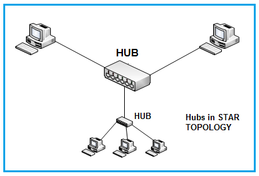Routers: Advantages and Disadvantages in Networking
Advertisement
Routers are essential components of modern networking, directing data traffic between different devices and networks. They play a vital role in ensuring smooth communication across local and wide area networks. While routers offer numerous benefits, such as network security and efficient data management, they also have limitations in terms of complexity and cost. In this guide, we will explore the advantages and disadvantages of routers, helping you understand their role in networking infrastructure.
What is a Router?
This networking device provides interconnection between two dissimilar networks. It operates at layer-3 of the OSI stack and takes care of routing packets based on a routing table. It uses IP addressing for routing the packets. The IP address of each host contains two parts: network address and host address. The router checks the destination host address, source host address, and network address in order to route IP packets appropriately. Refer to the TCP-IP Packet format to know about various fields and their purpose in the networking system.

Figure 1 depicts a router used to connect ATM and LAN networks.
Routers provide connectivity for mixed MAC environments by working with higher-layer protocols. Hence, connection between different network segments viz. ATM and LAN is possible. Most routers are multiprotocol routers and are capable of handling multiple network layer protocols. To make this possible, a router must be equipped with appropriate software for each protocol to be supported.
Unlike bridges, routers can intelligently determine the most efficient path from source to any destination. To make this possible, various algorithms such as RIP, OSPF, and BGP are used as routing protocols, as described below.
How Routers Work
The following points describe the working of routers:
- Step 1: The router receives a packet from one of its network interfaces.
- Step 2: It checks the packet’s destination IP address.
- Step 3: The router consults its routing table to find the best route.
- Step 4: It forwards the packet to the next hop (another router or the destination device) based on the routing table.
- Step 5: If the destination is in a different network, the process repeats at the next router until the packet reaches its final destination.
Routing Protocols
Routers can communicate with each other using routing protocols to share information about network topology and dynamically update their routing tables. Common routing protocols are as follows:
- OSPF (Open Shortest Path First): Finds the shortest path in a network.
- RIP (Routing Information Protocol): Uses hop count to determine the best path.
- BGP (Border Gateway Protocol): The protocol that governs routing between different autonomous systems on the internet.
These protocols ensure that routers know the best paths to send data as networks change (e.g., new devices are added or routes become unavailable).
Advantages of Routers
- They provide a connection between different network architectures such as Ethernet & Token Ring, etc.
- They can choose the best path across the internetwork using dynamic routing algorithms.
- They can reduce network traffic by creating collision domains and also by creating broadcast domains.
- They provide sophisticated routing, flow control, and traffic isolation.
- They are configurable, which allows network managers to make policy-based routing decisions.
- Unlike hubs (which operate in half-duplex mode), routers handle full-duplex communication, allowing data to be sent and received simultaneously without collisions.
Disadvantages of Routers
- They operate based on routable network protocols.
- They are expensive compared to other network devices.
- Dynamic router communications can cause additional network overhead, resulting in less bandwidth for user data.
- They are slower as they need to analyze data from layer-1 through layer-3.
- They require a considerable amount of initial configuration.
- They are protocol-dependent devices which must understand the protocol they are forwarding.
Conclusion
Routers are indispensable for managing data traffic and enhancing network security. However, their complexity and higher cost can be drawbacks for smaller networks. By weighing the advantages and disadvantages, network professionals can make informed decisions on whether routers are the best solution for their network needs.
Advertisement
 RF
RF




